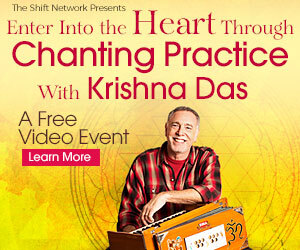 By Nick Polizzi
By Nick Polizzi
Guest writer for Wake Up World
A few years ago, one of my teachers taught me a powerful breathing exercise that I’d like to share with you today.
Variations of this technique have been used for millennia to induce altered states of consciousness and connect more deeply with the divine. On the surface, it’s hard to fathom how breathing alone can take us to such great heights. I had doubts myself – until I gave it a try. As it turns out, I hadn’t given my lungs enough credit – the experience was cathartic in ways that defy description.
This exercise comes with a special note of caution – please make sure to read it below!
The Art of Conscious Breathing
When was the last time you thought about how and when you breathe?
Biologically speaking, breathing is a rhythmic, involuntary process regulated by the body. Most of us do it about 12 to 20 times per minute. It’s kind of a requirement on the standard “staying alive” checklist.
But spiritually speaking, your breath is far more than that.
When we were filming The Sacred Science in Peru, one of the shamans, Roman Hanis, showed me the power of using the breath to access higher realms of awareness. He led me through some deeply transformative breathing exercises that combined both Amazonian and Tibetan mystic traditions.
Before beginning each session, he reminded us that we all begin our lives in a primordial state of peaceful love and kindness and through breathwork, it’s possible to return to that place.
In Roman’s words:
“Within many archaic languages, including Andean Quechua, Amazonian Quechua, Tibetan, Aramaic, Latin, Greek, Hawaiian and others, the word for “breath” is the same word that is used to describe life, spirit, and soul.”
This begs the question I’m always asking myself – what did the ancients know that we’ve forgotten?
For thousands of years, up to this very day, people have used conscious breathwork for many reasons. Here are just a few:
- To access healing and insight
- To expand consciousness
- To release stress or anxiety
- To re-energize the body
- To gain clarity and vision
- To connect with higher forces / spirit guides
A Simple Yet Powerful Breathing Exercise:
The breathwork exercise I will share below is intended as a simple intro, to give you a taste of what your breath can do. However I was on the fence about whether or not to share this exercise, because it can be intense and needs to be used with care.
A friendly warning before proceeding:
This type of breathwork should be avoided by anyone with a history of the following: cardiovascular disease, high blood pressure, glaucoma, retinal detachment, aneurisms, significant recent physical injuries or surgery. Pregnant women should avoid this type of breathwork as well.
Keep in mind that during the process, it’s common for you to experience a wide spectrum of feelings. Such sensations can include deep relaxation, joy, serenity, sleep or meditative states, and possibly the release of past trauma. Reliving the birth process or even past life experiences have been reported too.
With this in mind, it’s strongly recommended that you have someone with you who is aware of what you are doing and is willing to assist if you need anything along the way.
Remember, if you experience any overwhelming sensations it is OK to stop at any time.
The Practice:
Preparing your space:
Find a firm, flat surface to lie down on – a yoga mat on the floor is ideal. Many people also put a pillow under their head and a rolled blanket under their knees. An additional blanket can also be used for warmth if you become cold during the exercise.
Important: If this is your first time trying an exercise like this, I strongly recommend keeping it to 20 minutes max, before gently bringing your breath back to normal and letting your body relax for 10 minutes in a laying position.
Again, this practice should be done with a partner who can supervise you. Take turns at 20 minute intervals, one experiencing while the other holds space. Using a timer with a gentle sound is also recommended when trying this outside of a workshop or class setting.
Read through all of the steps below before starting and familiarize yourself with them.
Step #1)
Lie down on your back, with pillow under the knees and any blankets positioned in a way that makes you comfortable. Close your eyes and relax your body and breathing for a few minutes.
Step #2)
Take in a slow, deep breath. Gently breathe all the way to the bottom of your lungs so that your stomach moves outward a bit. At the end of your inhale, immediately begin to exhale at the same speed. At the end of your exhale, immediately begin breathing in again, slow and steady.
Step #3)
Be mindful of continuous, “circular” breathing – where there are no gaps between inhale and exhale. And be sure not to hold your breath. When your lungs are almost full, begin to exhale, then before your lungs are empty, inhale again. You want to create a pattern of constant breathing either in or out. Think about the breath as making a circular motion in, through, and out of your system, and repeat.
Step #4)
You will need to breathe a little bit faster than you would under normal circumstances. However, and this is very important, you don’t want to breathe so fast that you create tension anywhere in your body. The lungs and entire body should be as relaxed as possible. In this way, the breath cycle can be maintained for a longer period of time.
Step #5)
Breathing in and out through the mouth will support emotional release more completely. But if you find that it’s more comfortable to nose breath, that’s ok too. In about 10 minutes or so, your body will find its own rhythm and way of breathing.
(At about the 10 to 15 minute mark, you may begin to feel a tingling sensation in your extremities, a feeling of euphoria, or an “altered” state of awareness.)
Step #6)
After 20 minutes, your preset timer will sound (remember to set a peaceful alarm sound) and your partner will gently put a hand on your shoulder to let you know that it’s time to slowly and intentionally bring your breath back to normal. Take some time in this in-between state to notice how what you’ve learned integrates and interacts with the reality that comes back into focus around you. *Some find this to be the most revelatory piece to this exercise.
Step #7)
You are complete ?
I hope this practice gives you a glimpse of the innate wisdom that is available when you tap into the power of your breath. Conscious breathwork is yet another way to stay connected to the sacred in your life.
Thank you to the ancient masters who gave us this deeply transformative wisdom.
Stay Curious,
Nick Polizzi
Recommended articles by Nick Polizzi:
- The Art of Smudging: A Shamanic Cleansing Ritual
- The Science of Ayahuasca
- Sacred Science: A Jungle Healing Technique You Can Use Anywhere
- Wired for Tribe
- 3 Wild Herbs for Lucid Dreaming
- Eye Gazing — An Exercise for Soul Vision
- A Native Smoke Ritual For Renewal and Clarity
- 3 Ancient Medicines That Already Live In Your Home
- A Breathing Exercise to Take You Higher
- The Art of Blessing Your Food
About the author:
 Nick Polizzi has spent his career directing and editing feature length documentaries about natural alternatives to conventional medicine. Nick’s current role as director of “The Sacred Science” documentary and author of “The Sacred Science: An Ancient Healing Path For The Modern World” stems from a calling to honor, preserve, and protect the ancient knowledge and rituals of the indigenous peoples of the world.
Nick Polizzi has spent his career directing and editing feature length documentaries about natural alternatives to conventional medicine. Nick’s current role as director of “The Sacred Science” documentary and author of “The Sacred Science: An Ancient Healing Path For The Modern World” stems from a calling to honor, preserve, and protect the ancient knowledge and rituals of the indigenous peoples of the world.
For more, visit www.thesacredscience.com.

If you've found value in our articles, we invite you to support the release of our brand-new book, "Gratitude Practices for Kids: A Practical Guide for Adults to Instill a Spirit of Appreciation and Positivity in the Next Generation."
"Gratitude Practices for Kids" brings together over 25 innovative and accessible practices designed to enhance gratitude in everyday life. This comprehensive guide is backed by 17 scientific studies, ensuring each concept is grounded in research, underscoring our commitment to nurturing growth, emotional intelligence, and positive interactions between adults and children.
We encourage you to opt for the paperback version to celebrate this new release. Dive into its fresh pages away from digital distractions, allowing you to immerse yourself in the transformative practices it offers.
Over recent years, Wake Up World has faced significant online censorship, which has impacted our financial ability to operate. Moving into book publishing represents a strategic step to secure the ongoing funds needed to continue our mission. By purchasing Gratitude for Kids, you help us keep our content free and accessible to everyone, avoiding needing a paywall. With over 8,500 articles published in the last 13 years, we remain dedicated to keeping our valuable content open to all.








